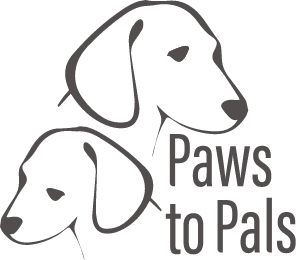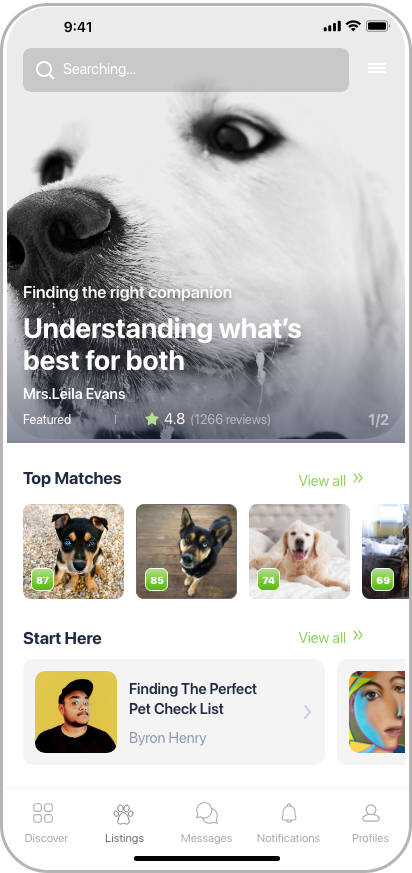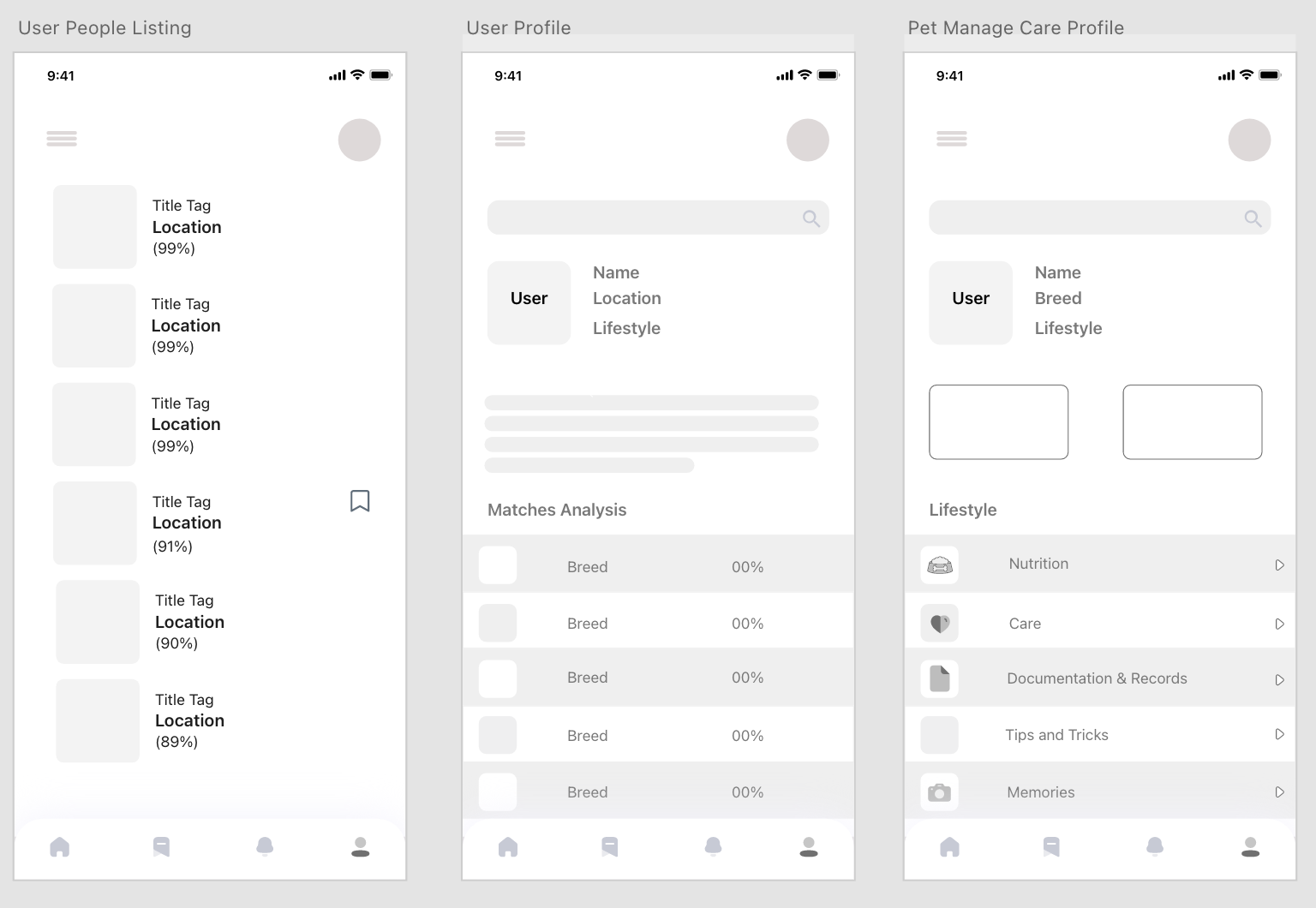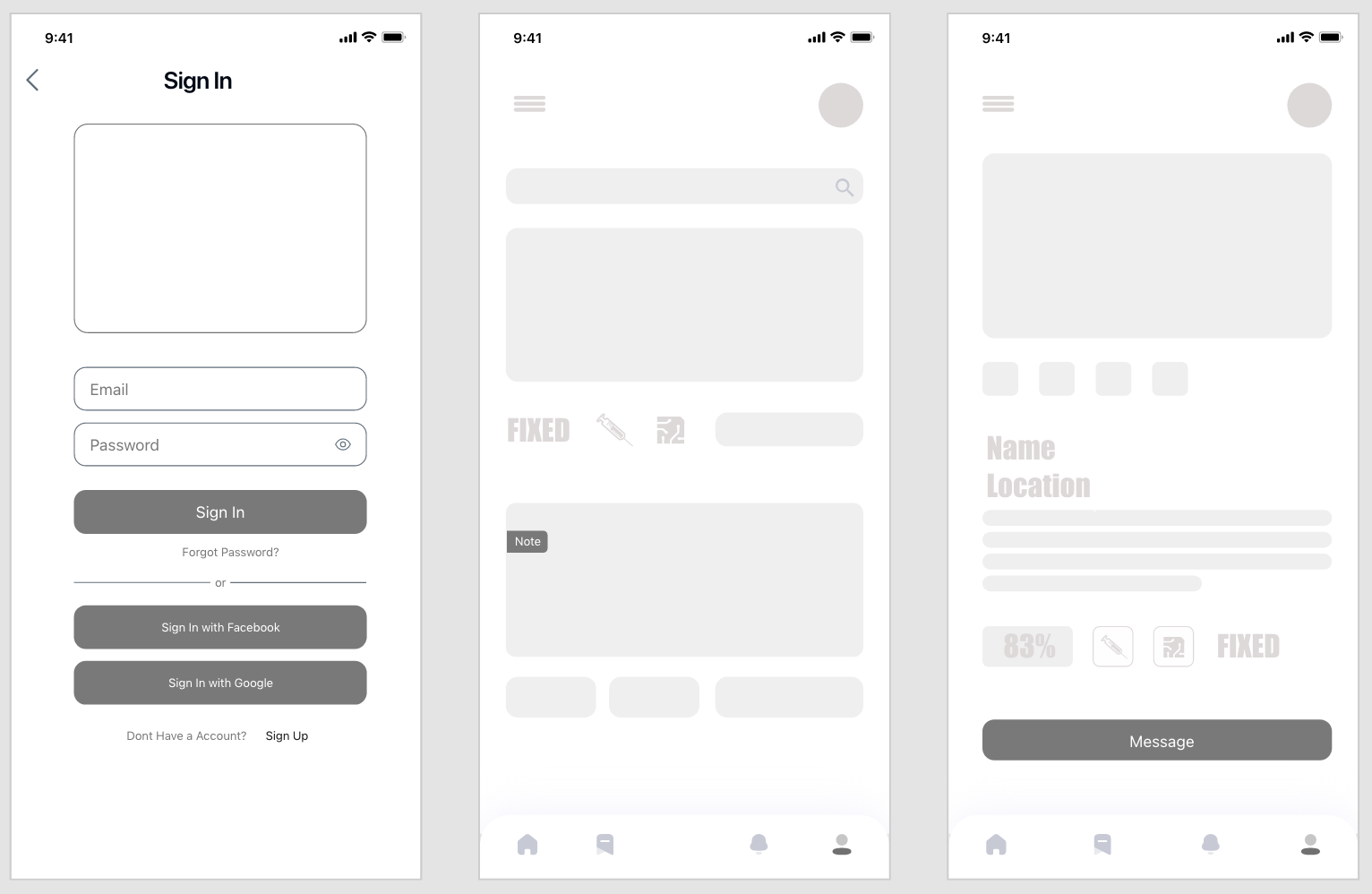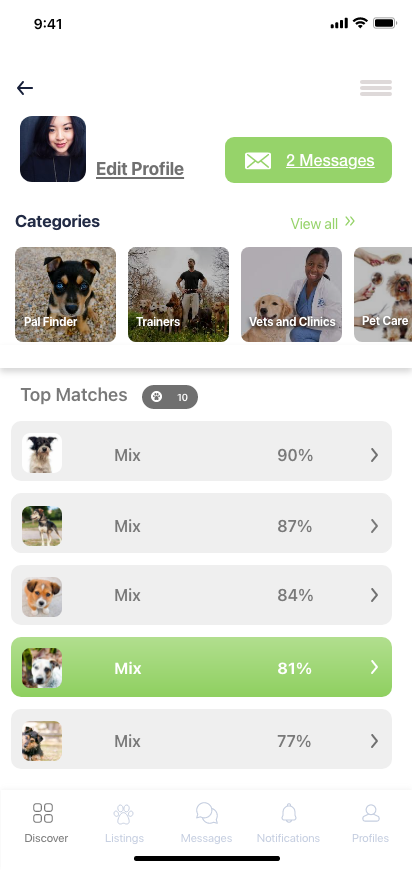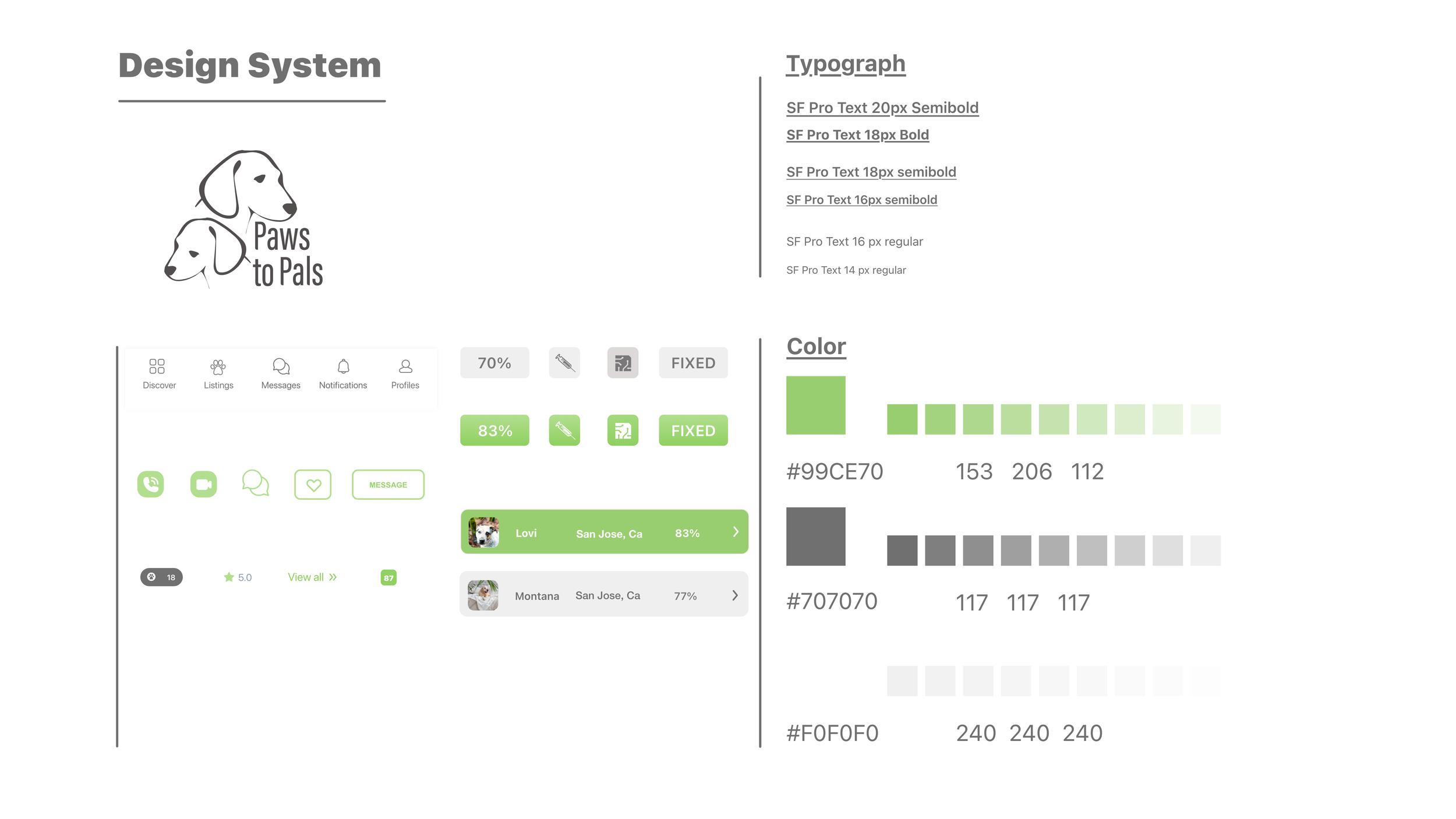
Case Study
A more inclusive approach to pet matching
Introduction
Project Overview
"Project PawtoPals" was an initiative aimed at revolutionizing the pet adoption experience by developing an intuitive, user-friendly platform that connects potential adopters with pets in need of a home. The goal was to create a seamless digital solution that simplifies the adoption process, ensures a good match between adopters and pets, and promotes responsible pet ownership. Our task was to address the challenges adopters face, such as overwhelming information, inconsistent processes, and the lack of support during and after the adoption.
Role
My name is Isa Abdul-Aziz, and I served as the UX Researcher, Product Designer, and Presenter for this project. My responsibilities included conducting user research to identify pain points and user needs, translating those insights into design solutions, creating prototypes in Adobe XD, and presenting our findings and designs to stakeholders.
Team and Collaboration
Our team consisted of five researchers and designers who worked collaboratively throughout the project. We divided tasks based on our strengths, with each member contributing to research, ideation, design, and testing. We held regular brainstorming sessions using video conference, communicated frequently through Google Chat, and coordinated our tasks via Gmail to ensure everyone was aligned and informed.
Tools Used
Adobe XD: For creating wireframes, prototypes, and high-fidelity designs.
Miro: For collaborative brainstorming, affinity mapping, and journey mapping.
Google Chat: For daily communication and quick team coordination.
Gmail: For formal communication, sharing documents, and scheduling meetings.
Problem Statement
Matching people with the ideal pet is a complex process. Many adopters are not experienced pet owners and often face inconsistent processes and inadequate information when adopting a pet. The knowledge to support them exists, but it's not easily accessible or standardized. Our goal is to develop an online and mobile system that matches adopters with pets that suit their lifestyles while encouraging and educating them about responsible pet ownership.
Challenge
The primary challenge for Project PawtoPals was to address the fragmented and overwhelming pet adoption process that potential adopters often encounter. Many users, particularly first-time adopters, struggle with inconsistent procedures, a lack of clear information, and inadequate support during and after the adoption process. This confusion not only deters potential adopters but also increases the likelihood of mismatches between pets and their new owners, leading to possible returns to shelters. Our task was to create a digital platform that simplifies this process, ensuring that adopters can easily find, connect with, and care for their ideal pet.
Goals
User Perspective:
Simplify the Adoption Process: Provide a seamless, user-friendly experience that guides adopters from initial interest to successful adoption.
Ensure Compatibility: Implement a matching system that aligns potential adopters with pets that fit their lifestyle, preferences, and experience level.
Promote Responsible Ownership: Equip adopters with the necessary information and resources to care for their pets effectively, reducing the likelihood of pets being returned.
Business Perspective:
Increase Successful Adoptions: Streamline the process to reduce drop-offs and ensure more pets find suitable homes.
Enhance Brand Reputation: Position the platform as a leader in humane and responsible pet adoption practices.
Cost Efficiency: Develop a solution that operates within budget constraints while maximizing user reach and satisfaction.
Constraints
Remote Collaboration: The project was conducted primarily remotely, which required the team to overcome challenges in communication and consistent coordination of time.
Limited Matching Schedules: Synchronizing availability for meetings and collaborative sessions proved difficult, leading to potential delays in decision-making and progress.
Low Budget: Operating within a tight budget restricted the scope of the project, limiting the resources available, which limited extensive research, testing, and iteration.
Small Team: With only five UX personnel with limited experience, the team had to manage a wide range of responsibilities, from research to design, requiring efficient time management and prioritization.
Agreeing on Collaboration Tools: Choosing a common platform for collaboration was a challenge, given the diverse preferences of the team members. Ultimately, tools like Miro (whiteboarding) and Google Chat were selected to facilitate remote collaboration effectively.
Research Goals
Learn about who is adopting.
Learn about the user putting the pets up for adoption.
Learn about what users need for pet care.
Learn about what functions and processes make it easy for users.
WHY
Why is this Product or Feature Important?
Imagine you're thinking about adopting a pet—exciting, right? But then, as you start looking into it, you realize how complicated the process can be. If you've never adopted before, it can feel overwhelming. There are so many steps, questions, and responsibilities you might not even know about yet. That's why this project was born: to simplify that journey. We're building an easy-to-use online and mobile system that takes the guesswork out of pet adoption, so you can focus on finding your perfect companion, without the stress. It's about making the experience smoother and more enjoyable, especially for those navigating it for the first time.
What Problem Are We Trying to Solve?
Think about the current pet adoption process—it's often a bit of a maze. One shelter might do things one way, while another does something completely different. This inconsistency can leave adopters without the critical information they need to make the right choice. And sometimes, that mismatch between a pet and its new owner means the pet ends up back at the shelter, which is heartbreaking for everyone involved.
Our goal is to change that. We're working to create a more standardized, user-friendly adoption process that not only helps you find a pet that truly fits your lifestyle but also ensures you’re well-prepared for the commitment of pet ownership. Our goal is to set both pets and their new families up for success right from the beginning.
What Impact Does it Have on the World?
Have you ever thought about how improving the pet adoption process could ripple out into the world? When we make it easier and more reliable for people to find the right pet, we increase the chances of those adoptions being successful. Fewer pets get returned to shelters, and more animals find their forever homes. But it’s not just about the pets and their new families, it goes beyond that. It helps support animal welfare organizations in their mission to care for and protect animals, creating a positive impact that benefits everyone involved.
How Does this Product Benefit Customers?
Adopters will have access to a user-friendly platform that guides them through the adoption process, providing personalized recommendations for pets that match their lifestyles and needs. They will also receive resources and support to help them become successful pet owners, reducing the anxiety and uncertainty that often accompanies pet adoption.
What Business Opportunity Does it Create?
How does this product make a difference for you, the adopter? By having a simple, user-friendly platform that guides you every step of the way through the adoption process. It doesn’t just stop at showing you available pets, it gives personalized recommendations based on your lifestyle and needs, helping you find the perfect match. Plus, you’ll have access to resources and support to help you feel confident as a new pet owner. No more second-guessing or feeling overwhelmed; this platform is designed to make the journey smooth and enjoyable, taking away the uncertainty that often comes with adopting a pet.
For Existing Products: How Does it Extend the Company’s Mission?
This system builds on the company’s mission of promoting responsible pet ownership and improving animal welfare. By providing a consistent and supportive adoption experience, the platform helps ensure that pets find loving and suitable homes, which aligns with the organization's broader goals.
Comparative Analysis:
Each researcher was given the objective of exploring 2 websites for comparative analysis. The tester was given a general framework to gather insights on the adaption process, services model, and functionality.
One researcher chose dating sites to explore matching variables and functionalities. This measure was chosen for the purpose of adding human lifestyle and matchmaking functionality to our application which could potentially add insights to our user experience.
Site Visit:
The purpose of our site visit was to add some contextual insight as well a semi-structural interviews to our case study. This method was intended to extract qualitative data that allowed us to emphasize the needs of adopters and adoption facilities that we could quantify.
We wanted to understand the day-to-day process for the adoption agency.
What are the before thoughts going into the process and afterthoughts of the adopters?
What are the common misunderstandings about the process?
What are some of the common questions and concerns on both ends?

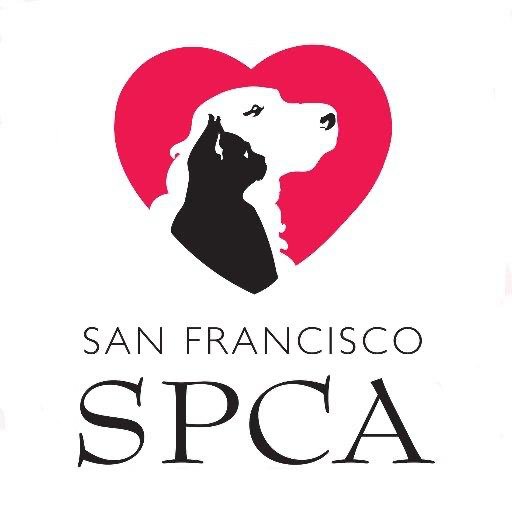

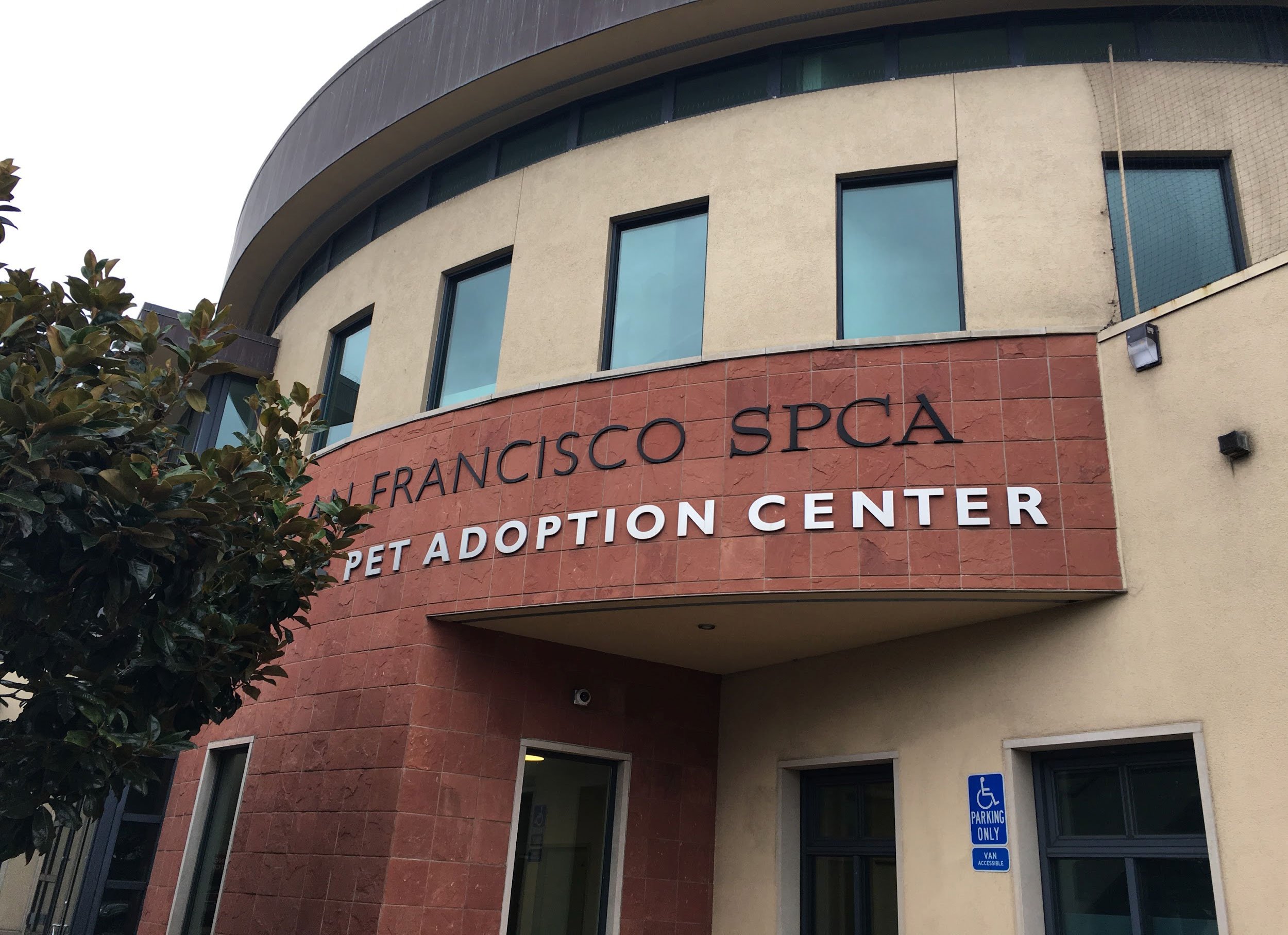




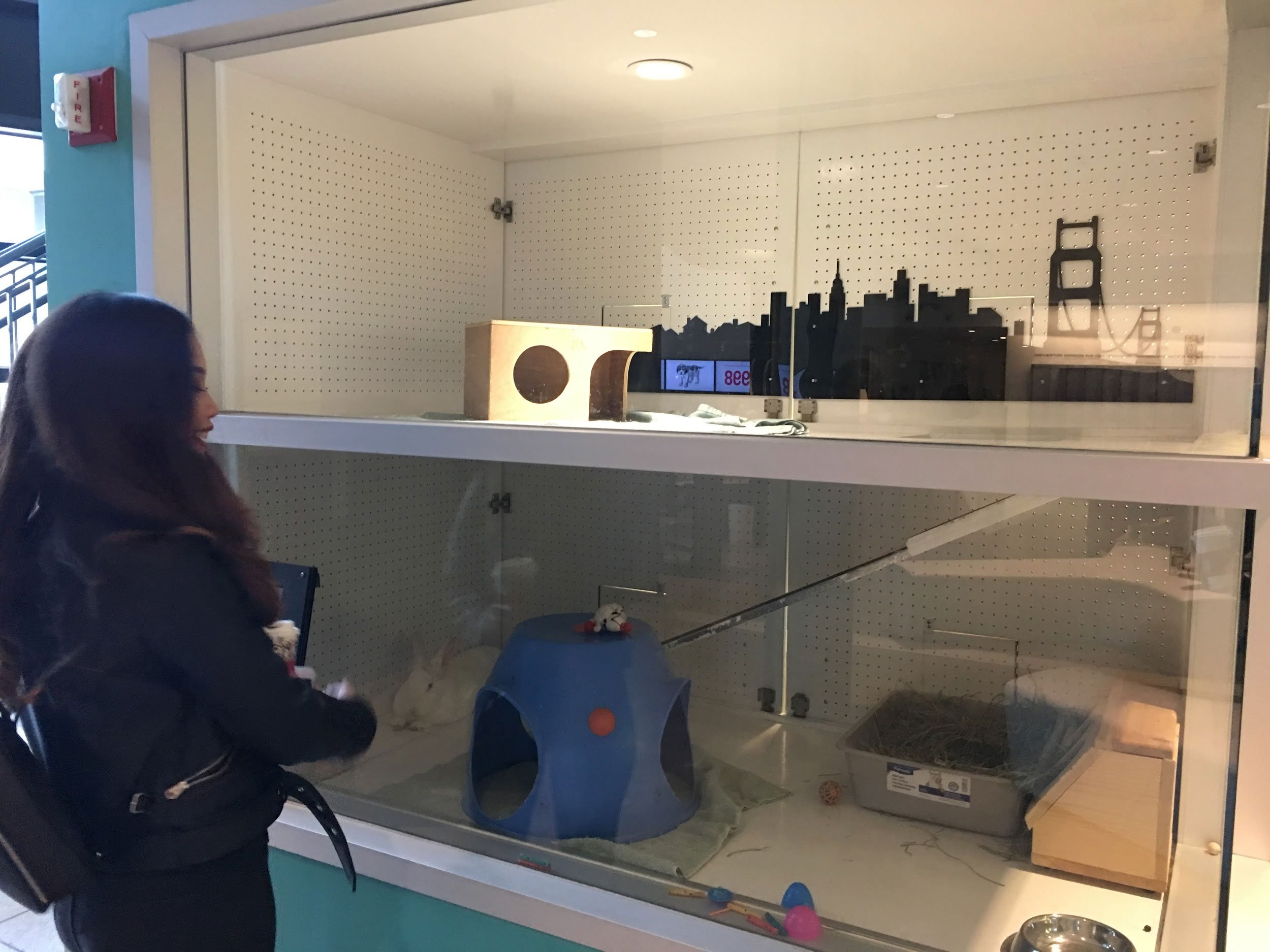
Defining
WHO
Defining the Audience
Categories of People with Different Motivations
First-Time Adopters
Motivation: Desire to adopt a pet for the first time, seeking companionship, and often looking for guidance on the adoption process.
Challenges: Lack of experience in pet ownership, uncertainty about the type of pet that would fit their lifestyle, and concerns about the responsibilities involved.
Experienced Pet Owners
Motivation: Adding a new pet to their household, often already familiar with the responsibilities but may have specific preferences based on past experiences.
Challenges: Finding a pet that integrates well with existing pets and family members, or seeking a pet with particular characteristics (e.g., breed, size, temperament).
Families with Children
Motivation: Looking to adopt a pet that is suitable for a family environment, particularly one that is child-friendly.
Challenges: Ensuring the pet is safe and appropriate for children, balancing the needs of both the children and the pet, and finding a pet that fits into a busy family schedule.
Seniors
Motivation: Seeking companionship, often looking for a pet that is low-maintenance and suits a quieter lifestyle.
Challenges: Mobility issues, living in smaller spaces, and needing a pet that does not require intense physical activity or care.
Urban Professionals
Motivation: Wanting a pet for companionship in a city environment, often with limited space and time due to busy work schedules.
Challenges: Finding a pet that can adapt to apartment living, managing care around a demanding job, and ensuring the pet can be cared for during long work hours.
Rural or Suburban Residents
Motivation: Typically have more space and may be looking for a pet that can live both indoors and outdoors.
Challenges: Considering the needs of a pet that might require more space and exercise, ensuring the pet is safe in a less controlled environment, and integrating the pet into a home with other animals or livestock.
Different Groups Inside This Audience
By Age
Young Adults (18-30): Often first-time adopters, living in smaller spaces, and may have active lifestyles.
Middle-Aged Adults (31-60): Likely to be experienced owners, possibly with families, and may have specific needs based on past experiences with pets.
Seniors (60+): Looking for companionship with low-maintenance pets, potentially facing mobility challenges.
By Gender
While gender may not always significantly impact pet adoption motivations, it can influence preferences for certain types of pets (e.g., size, breed).
By Location
Urban Dwellers: Need pets that can adapt to smaller living spaces and less outdoor access.
Suburban/Rural Residents: Can accommodate larger pets, often seeking animals that can enjoy more outdoor freedom.
By Occupation
Professionals: Need flexibility in pet care due to busy schedules, often seeking low-maintenance pets.
Remote Workers: May have more time to dedicate to a pet, possibly open to pets that require more attention.
Families with Working Parents: Require pets that can be left alone for parts of the day and integrate well into a busy household.
By Mobility
Highly Active Individuals: Likely to seek pets that match their active lifestyles (e.g., dogs requiring frequent walks or runs).
Individuals with Limited Mobility: Prefer pets that are easier to manage and require less physical activity (e.g., cats, small dogs).

When and Where
Understanding Customer's Context and Needs
When and Where: Customer's Context
Where Are They Physically?
At Home: Many users, especially first-time adopters, may start the pet adoption process from the comfort of their home, browsing online for potential pets and researching the responsibilities involved in pet ownership.
At a Shelter or Adoption Event: Some users may physically visit shelters or attend adoption events, seeking immediate connection with a pet or to get direct information from staff.
On the Go: Urban professionals or busy individuals might engage with the adoption process while commuting, using mobile apps or browsing online during short breaks.
Is There a Trigger Event Causing This Need?
Lifestyle Changes: A change in personal circumstances (e.g., moving to a new home, a family member leaving, or retiring) might trigger the desire to adopt a pet.
Emotional Events: Users might seek a pet for emotional support following a loss, loneliness, or a desire for companionship.
External Influences: Exposure to stories of pet adoption through media, friends, or community events can also prompt the decision to adopt.
How Much Time Do They Have?
Immediate Adoption: Users at shelters or events might need to make a quick decision, requiring instant access to relevant information.
Exploratory Phase: First-time adopters may spend weeks or months researching and preparing before deciding, taking their time to ensure they are ready.
Limited Time: Busy professionals may have short bursts of time to interact with the adoption process, necessitating quick and efficient access to information.
Are They on a Specific Digital App or Platform?
Mobile Apps: Users who are on the go, particularly urban professionals, are likely to use mobile apps to browse available pets and resources.
Websites: Those at home or during dedicated research sessions might prefer desktop websites where they can view more detailed information.
Social Media: Trigger events may be initiated on platforms like Instagram, Facebook, or TikTok, where users see posts about pets available for adoption.
What Emotions Do They Experience?
Excitement and Anticipation: The prospect of adding a pet to their lives often fills adopters with excitement and eagerness.
Anxiety and Uncertainty: First-time adopters might feel anxious about the responsibilities of pet ownership and whether they are making the right choice.
Overwhelm: The complexity and variety of information can be overwhelming, especially when faced with numerous adoption procedures and options.
Empathy and Compassion: Many adopters feel a strong sense of empathy towards animals, motivating them to find the best possible match.
Customer Needs: High-Level Motivation
What is the Customer’s High-Level Motivation for Solving the Problem?
Successful Pet Adoption: The primary motivation is to successfully adopt a pet that fits their lifestyle, ensuring a long-term, loving relationship.
Responsibility and Readiness: Customers want to feel confident and well-prepared to take on the responsibilities of pet ownership, seeking assurance that they are making informed decisions.
Finding the Ideal Match: Users are driven by the desire to find a pet that aligns with their emotional, physical, and logistical needs, ensuring compatibility.
Support and Guidance: Many adopters, particularly first-timers, need ongoing support and education to become responsible pet owners.
How Could They Achieve That?
Streamlined Information Access: By having a platform that consolidates all necessary information in one place, users can easily understand what is required of them and make informed decisions.
Personalized Recommendations: An adoption system that provides tailored pet suggestions based on their lifestyle, preferences, and home environment can significantly aid in finding the right match.
Educational Resources: Providing users with guides, checklists, and advice on pet care can empower them to feel ready and responsible.
Community and Support Networks: Building a sense of community, where users can share experiences and gain support from other adopters or professionals, can help ease anxiety and foster confidence.
WHAT
What to Build to Fulfill the Customer’s Needs?
A. Digital Platform: Comprehensive Pet Adoption App
Type: Mobile App (Smartphone, Tablet)
Description: A dedicated app that serves as a one-stop solution for the entire pet adoption journey. It includes:
Personalized Pet Matching: Uses AI to recommend pets based on the user’s lifestyle, preferences, and home environment.
Interactive Guides: Provides step-by-step guides on pet care, tailored to the type of pet being adopted.
Virtual Meet-and-Greet: Facilitates virtual meetings with pets and shelter staff through in-app video calls.
Adoption Process Tracker: Helps users track their progress through the adoption process, with reminders and checklists.
Community Support: Includes a community forum for adopters to share experiences, ask questions, and receive support.
B. Digital Product: Web-Based Adoption Portal
Type: Desktop, Laptop, Tablet
Description: A responsive website designed for users who prefer to conduct their adoption research and interactions on larger screens. It includes:
In-Depth Pet Profiles: Detailed profiles with photos, videos, and behavioral assessments.
Comparison Tool: Allows users to compare multiple pets side-by-side to determine the best fit.
Resource Library: A comprehensive library of articles, videos, and infographics about pet care, adoption tips, and training.
Appointment Scheduling: Integrated scheduling tool to book in-person visits or virtual meet-and-greets with shelters.
C. Digital Product: Smartwatch Companion App
Type: Smartwatch
Description: A companion app that syncs with the main mobile app or web platform, providing quick updates and reminders. It includes:
Adoption Progress Notifications: Alerts users about upcoming appointments, application status, and next steps in the adoption process.
Daily Pet Care Tips: Sends daily bite-sized tips on pet care, helping new adopters build good habits.
Activity Tracker Integration: For adopters with active lifestyles, the app can suggest pets that match their activity level and track potential walks or playtimes with the new pet.
D. Physical and Digital Product: VR Pet Interaction Experience(optional)
Type: VR-Headset, Desktop, Laptop
Description: A VR experience that allows potential adopters to interact with pets in a virtual environment before making a decision. It includes:
Virtual Pet Interaction: Users can see how the pet reacts to different stimuli, such as play or commands, in a virtual setting.
Home Simulation: A feature that simulates the user’s home environment to see how the pet might fit into their living space.
Educational Modules: Immersive tutorials on pet care, allowing users to practice feeding, grooming, and other tasks virtually.
E. Physical Product: Pet Adoption Starter Kit
Type: Physical Product
Description: A physical starter kit that is sent to adopters once they’ve chosen a pet. It includes:
Essential Supplies: Items like a leash, collar, feeding bowls, toys, and basic grooming tools.
Personalized Guidebook: A printed guide with information tailored to the specific pet they’ve adopted, including care tips, training advice, and emergency contacts.
Smart Tags: A pet ID tag with QR code linked to the adopter’s profile, providing quick access to pet care information and emergency contacts via smartphone.
F. Hybrid Product: TV-Based Pet Adoption Experience
Type: Smart TV App
Description: A TV app that allows users to browse available pets and learn about adoption in a more relaxed, home-based environment. It includes:
Pet Showcase: Featured pets are displayed in high-definition videos with background music and voiceovers explaining their personality and needs.
Interactive Q&A: Users can participate in interactive sessions where they ask questions and get live answers from shelter staff or adoption experts.
Family Decision-Making Tool: Allows multiple users to "vote" on pets using their smartphones, helping families make collective decisions.
To prioritize the ideas and place them on an Impact/Effort matrix, we’ll assess each idea based on two criteria:
Impact: This considers the potential reach, value to the customer, and potential revenue. High impact means the product significantly enhances the user experience, reaches a broad audience, and has strong potential for generating revenue.
Effort: This considers the implementation complexity, including development time, resource requirements, and technical challenges. High effort means the product requires substantial resources and time to develop.
| Impact | Low Effort | High Effort |
|---|---|---|
| High Impact | 1. Comprehensive Pet Adoption App (Mobile App) |
4. VR Pet Interaction Experience (VR-Headset, Desktop, Laptop) |
| 2. Web-Based Adoption Portal (Desktop, Laptop, Tablet) |
5. Smartwatch Companion App (Smartwatch) |
|
| Low Impact | 3. Pet Adoption Starter Kit (Physical Product) |
6. TV-Based Pet Adoption Experience (Smart TV App) |
Prioritization and Placement on the Matrix
1. Comprehensive Pet Adoption App (Mobile App)
Impact: High
High potential reach as most users have smartphones.
Significant value to customers due to its comprehensive features that address key pain points.
Strong potential for generating revenue through in-app purchases, partnerships, or premium services.
Effort: Medium-Low
Requires development, but mobile app creation is a well-established process with manageable complexity.
Leverages existing technologies like AI for pet matching and interactive guides.
Placement: High Impact / Low Effort
2. Web-Based Adoption Portal (Desktop, Laptop, Tablet)
Impact: High
Broad reach across multiple devices, appealing to users who prefer larger screens for research.
Valuable for detailed adoption processes, offering in-depth information and resources.
Can generate revenue through ads, partnerships, and premium content.
Effort: Medium
Requires significant design and development but less complex than VR or smartwatch integration.
Placement: High Impact / Low Effort
3. Pet Adoption Starter Kit (Physical Product)
Impact: Medium
Adds value by ensuring adopters are well-equipped, but the physical nature limits reach.
Provides additional revenue opportunities through the sale of kits or as part of a premium adoption package.
Effort: Low
Simple to implement as it involves sourcing existing products and assembling kits.
Distribution logistics are straightforward.
Placement: Medium Impact / Low Effort
4. VR Pet Interaction Experience (VR-Headset, Desktop, Laptop)
Impact: High
Innovative and engaging, offering a unique experience that can attract tech-savvy users.
High value in pre-adoption decision-making and could drive interest and media attention.
Effort: High
High development effort due to the need for VR content creation, integration, and technical support.
Requires investment in VR technology and potentially limits the audience to users with access to VR headsets.
Placement: High Impact / High Effort
5. Smartwatch Companion App (Smartwatch)
Impact: Medium
Useful for quick updates and reminders, appealing to users already engaged with smartwatches.
Adds incremental value but is supplementary rather than central to the adoption process.
Effort: High
Development is complex due to the need for integration with smartwatch platforms and syncing with the main app.
Placement: Medium Impact / High Effort
6. TV-Based Pet Adoption Experience (Smart TV App)
Impact: Medium-Low
Niche appeal, mainly targeting families or users who prefer a laid-back, home-based exploration.
Limited direct interaction and engagement compared to mobile or web platforms.
Effort: High
High development effort due to the need for smart TV app development and integration, with potentially limited reach.
Placement: Low Impact / High Effort
Conclusion: Prioritization
Top Priorities:
Comprehensive Pet Adoption App (Mobile App): High impact, relatively low effort. It should be the primary focus for development.
Web-Based Adoption Portal: Also high impact with moderate effort. This can run concurrently or as a secondary focus.
Next Tier:
Pet Adoption Starter Kit: Easy to implement with moderate impact. It complements digital products and can be rolled out quickly.
VR Pet Interaction Experience: High potential but requires significant resources. Consider it as a future innovation project after core platforms are established.
Lower Priority:
Smartwatch Companion App: Adds value but should be considered after the main app is well-established. (wasn’t neccessary)
TV-Based Pet Adoption Experience: Lowest priority due to its niche appeal and high effort. Consider only if there’s a specific demand or partnership opportunity. (not realistic for us.)
User Persona 1
Summary:
Meet Malcolm, he's on the hunt for a dog to join him on his daily walks, fishing outings, and camping adventures. What he's really after is a simple, user-friendly adoption experience, and he’s drawn to the app’s pet care resources. While he’s got his eye on a Lab or a Border Terrier Lab mix, breeds he knows well, he hasn't yet explored the idea of a pet matching system. But with the right guidance, Malcolm could discover that there’s an even better fit out there, one that perfectly matches his active lifestyle.
Frustrations/Pains
Often lonely now that his wife has passed.
Doesn’t want to make time for all the paperwork.
Would like a dog that matches personalities.
Wants to walk more to improve his health and energy.
Doesn’t want a lot of E-mail or back-and-forth messaging.
Needs/Motivations:
Concern about a lengthy process
Hasn’t thought about a dog that matches his lifestyle.
Needs a comfortable, easy-to-use website always available.
His daughter used this app before and will help with setup.
Summary:
Mark is single and just finished college. He lives alone with his dog Spank but doesn’t have consistent work. His nightlife habits made him realize he definitely wasn’t ready to be a pet owner. Considering he hasn’t had Spank long, he realizes he made another impulsive decision getting him in the first place. He loves the dog enough to know he isn’t doing right by him and needs to find Spank another home. He doesn’t want to deal with the daunting process of rehoming. He would love something interactive like a Zoom call and to just talk to the potential new owner to get a feel for them. He has set his lifestyle requirements pretty high because he wants to limit the possibility of Spank having to go through this process again.
User Persona 2
Frustrations:
Got a puppy from a friend but regrets the decision and needs to re-home.
The dog has all its shots.
Doesn’t want to make time for all the paperwork,
Just wants the dog to go to the right family.
Doesn’t want too much E-mail or back-and-forth text messages.
Needs/Motivations:
A good home.
An active home.
Kids in the home.
A good feeling about family.
How Might We?
The how might we questions were a mix of user interaction and social responsibility. We wanted the ease of use to be convenient for the user without losing the component of advocating for the best possible family and lifestyle match for family and pet.
How might we determine the most effective questions for filtering and matching users with pets that best fit their lifestyle and needs?
Focus: Ensuring the matching system accurately pairs adopters with suitable pets to reduce returns and improve adoption success rates.
How might we encourage adopters to consider shelter, rescue, and neutered pets over bred animals?
Focus: Promoting the adoption of sheltered and rescued animals by highlighting their benefits and aligning with the platform's mission.
How might we create an ongoing education system that provides tailored care tips based on the pet's breed and the owner's preferences?
Focus: Supporting adopters with personalized, continuous education to promote responsible pet ownership and reduce the likelihood of returns.
How might we evolve the adopter’s profile into a comprehensive pet care system once the pet is in their care?
Focus: Transitioning the platform from an adoption tool to a long-term pet care resource, supporting the pet's well-being throughout its life.
How might we guide adopters in urban areas towards choosing smaller dogs that fit apartment living and rental requirements?
Focus: Helping urban adopters find pets that are well-suited to their living conditions, thereby reducing potential housing conflicts.
How might we simplify the pet matching process to make it intuitive and stress-free for users?
Focus: Enhancing the user experience by making the process of finding and adopting the right pet as easy and enjoyable as possible.
How might we raise awareness about the importance of pet care and responsible ownership among adopters?
Focus: Educating adopters on the responsibilities of pet ownership to ensure they are fully prepared for their new role.
How might we connect adopters with essential healthcare services and products for their pets?
Focus: Providing seamless access to veterinary care, health products, and other necessary services to support the pet’s long-term health.
How might we store and manage pet medical records to ensure easy access for adopters and healthcare providers?
Focus: Developing a secure and user-friendly system for tracking and accessing pets' medical histories, ensuring continuity of care.
Minimum Viable Product
The onboarding strategy is crucial for setting the user experience standard of the project. The user group influenced the design sprint significantly, and we focused on the adoption process as the solution. We decided to iterate on the "Pet Care" component to better target the user's needs after adopting a pet.
Features
Onboarding Process
Goal: Ensure new users have a smooth and informative introduction to the platform.
Features:
Guided Onboarding: A step-by-step walkthrough that familiarizes users with key features, including pet matching, profile setup, and the adoption process.
User Preferences Setup: Collect initial information about the user's lifestyle, preferences, and adoption goals to personalize their experience from the start.
Pet Matching Quiz: An interactive quiz that helps users identify the types of pets that best fit their needs, serving as an introduction to the matching process.
Listings View
Goal: Provide a clear, organized view of available pets, making it easy for users to browse and filter options.
Features:
Search and Filter Options: Advanced search functionality with filters for breed, size, age, temperament, and location.
Thumbnail Previews: High-quality images and brief descriptions in the listings, allowing users to quickly scan and identify potential matches.
Favorites List: A feature for users to save and compare pets they are interested in for later review.
Selection Process
Goal: Streamline the process of selecting and applying for a pet, ensuring users have all the information they need.
Features:
Detailed Pet Profiles: Comprehensive profiles for each pet, including photos, videos, health information, temperament, and care requirements.
Comparison Tool: Side-by-side comparison feature that allows users to evaluate multiple pets based on key attributes.
Application Submission: A simple, integrated application process that guides users through the steps needed to apply for a pet.
User Profile (Pet Listing)
Goal: Provide adopters with a centralized view of all relevant information about a specific pet.
Features:
Complete Pet History: Details on the pet’s background, including medical history, behavioral assessments, and any special needs.
Adoption Status Tracker: A visual indicator showing the current status of the pet’s adoption process (e.g., available, pending, adopted).
Interactive Media: Photos and videos showcasing the pet's personality and behavior in different environments.
User Profile (Person Listing)
Goal: Allow users to manage their personal information and track their adoption journey.
Features:
Personal Dashboard: A dashboard that summarizes the user's adoption progress, saved pets, and any upcoming appointments or tasks.
Profile Customization: Ability to update personal information, preferences, and adoption-related data.
Communication Hub: A centralized space for all communications with shelters, including messages, updates, and notifications.
Pet Care Management
Goal: Support adopters in managing their pet’s ongoing care needs.
Features:
Care Schedules and Reminders: Tools to create and manage feeding, grooming, and veterinary schedules, with automated reminders.
Health Tracking: A log for tracking health metrics such as weight, exercise, and vet visits, helping adopters stay on top of their pet's well-being.
Educational Resources: Access to articles, videos, and tips tailored to the specific needs of the adopted pet, based on breed, age, and health.
Pet Care Services
Goal: Connect adopters with essential services to support their pet’s health and well-being.
Features:
Service Directory: A curated list of local veterinarians, groomers, trainers, and pet sitters, searchable by location and service type.
Booking Integration: Direct booking capabilities for veterinary appointments, grooming sessions, or training classes, integrated within the platform.
Discounts and Offers: Partnerships with service providers to offer discounts or promotions for platform users, encouraging regular use of pet care services.
Mapping
Explanation of the User Experience Site Map:
Home: The landing page where users can get an overview of the platform and navigate to key sections.
Onboarding Process: Guides new users through setting up their preferences, taking the pet matching quiz, and creating an account.
Pet Listings: Where users can browse and filter available pets, view detailed profiles, compare options, and save favorites.
Adoption Process: Handles the application, document uploads, status tracking, and scheduling virtual meet-and-greet sessions.
User Profile: Centralized location for users to manage their information, track adoption progress, and access pet care management tools.
Pet Care Management: Provides tools and resources for ongoing pet care, including schedules, health tracking, and access to services.
Pet Care Services: Directory of pet-related services like veterinarians, groomers, and trainers, along with booking and discounts.
Community and Resources: A hub for educational content, community interaction, and user support.
About/Contact Us: Information about the project, team, mission, FAQ, and ways to contact or connect with Project PawtoPals. (adjusted for mobile)


